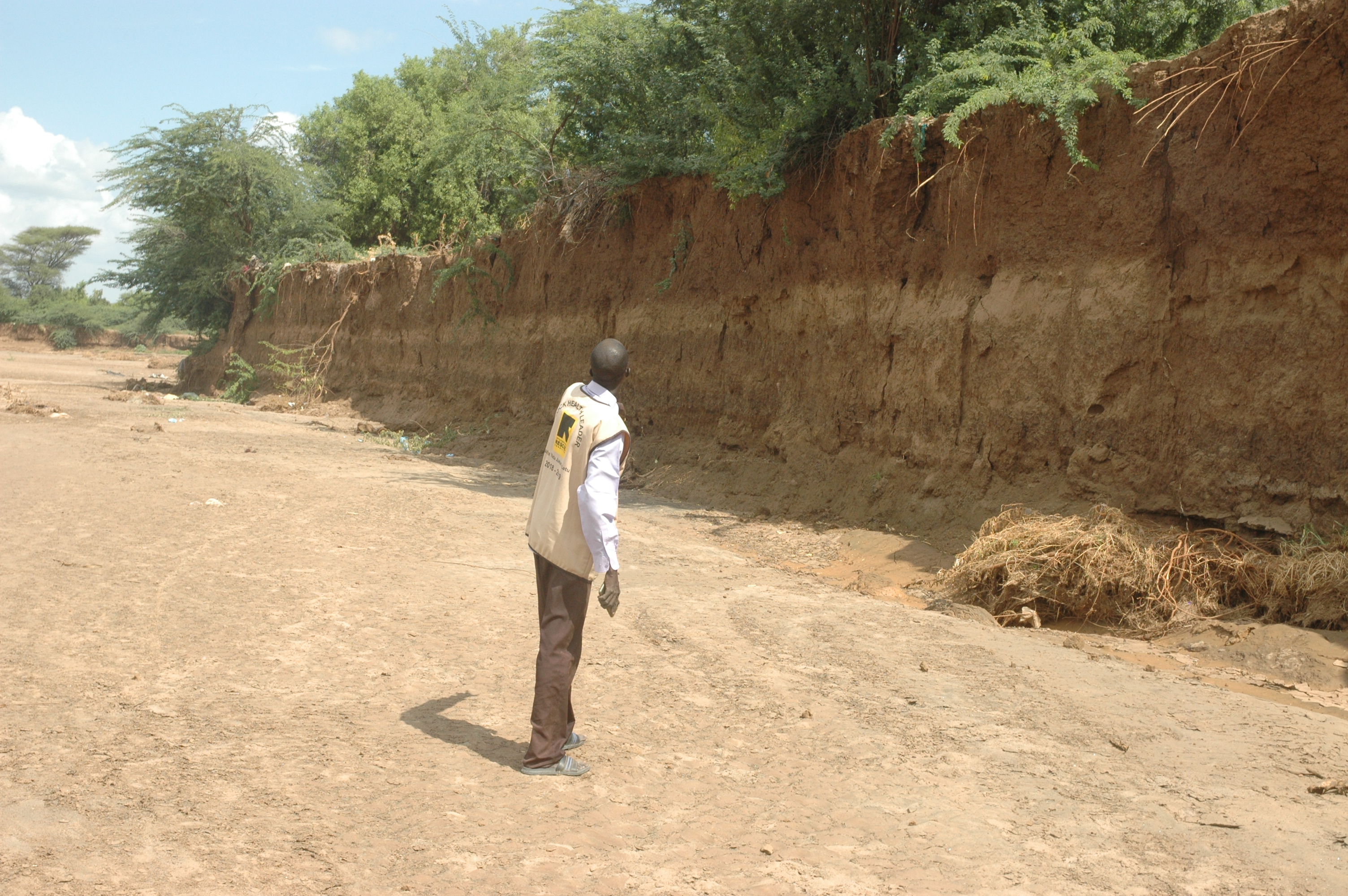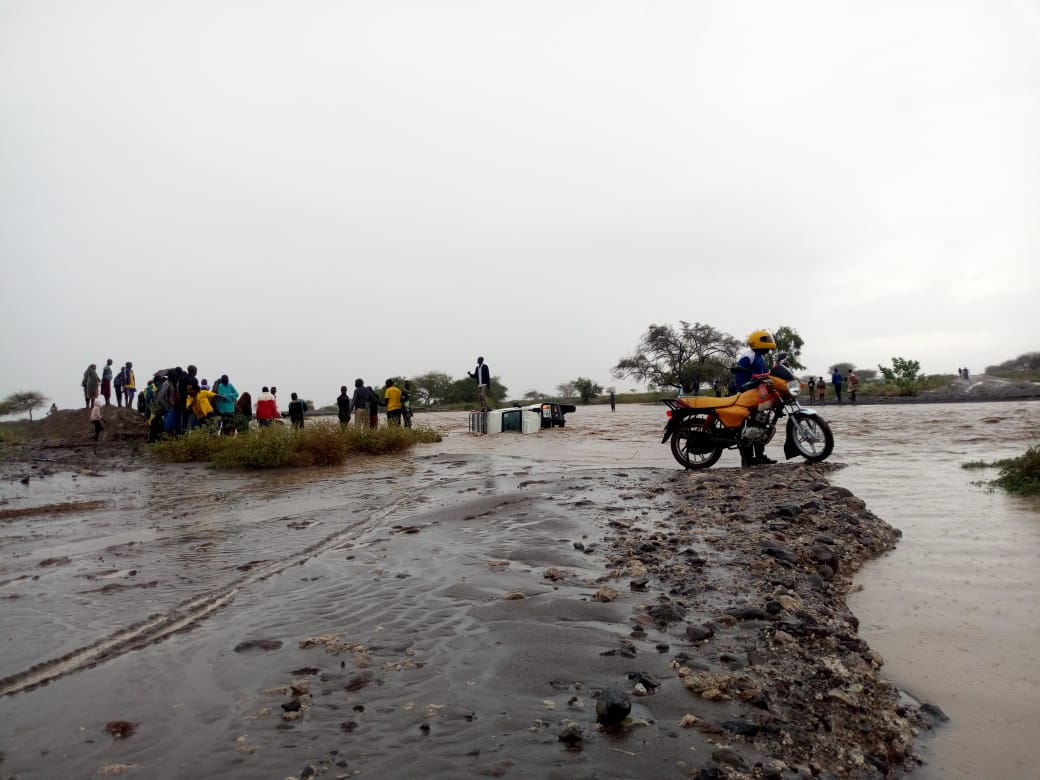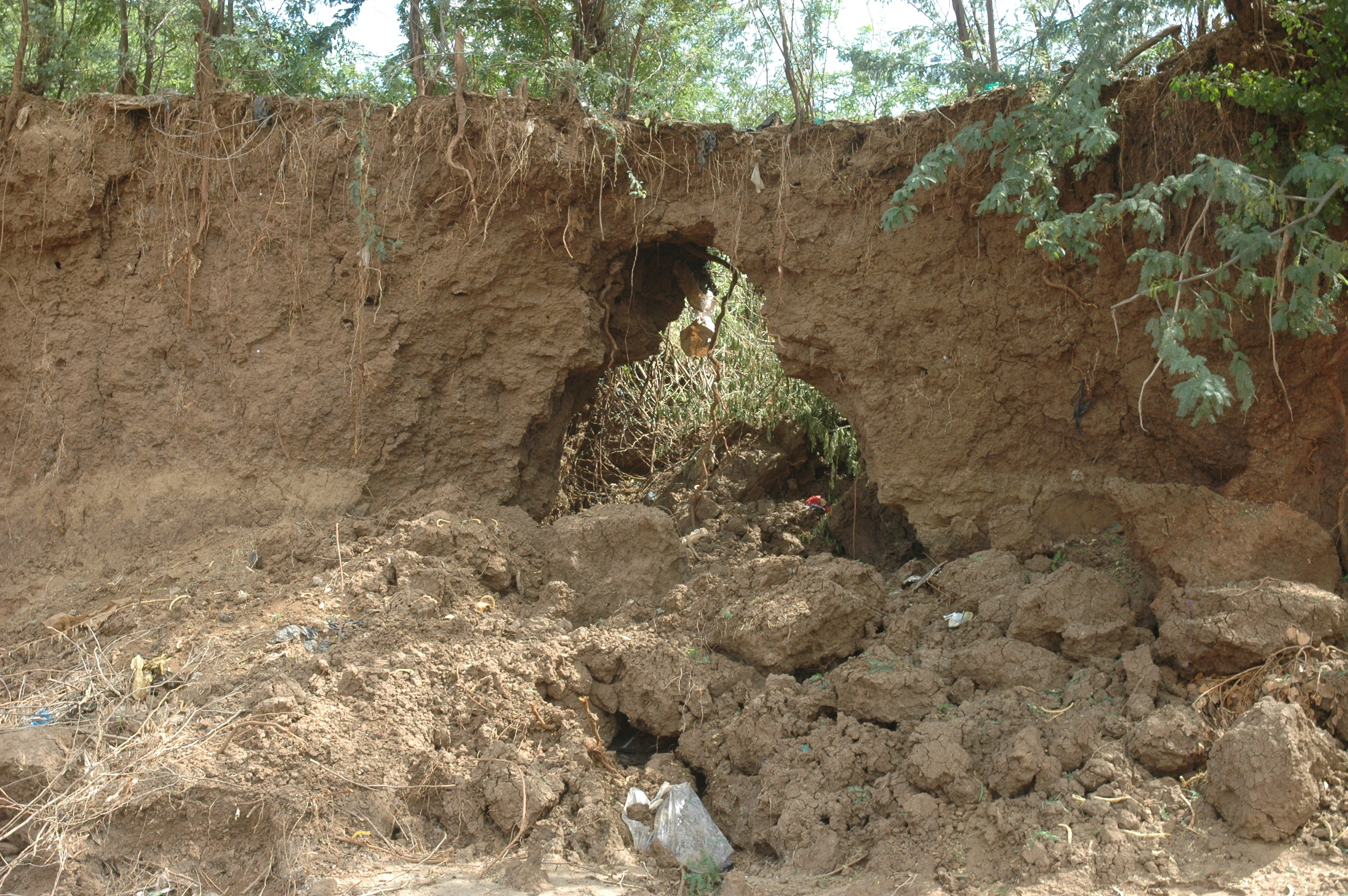By KANERE Staff Reporter, November 2019
Seven people died in the Kakuma refugee camp after torrential overnight rains, with some swept away while crossing rivers, a zone leader in Kakuma 1 told KANERE.
“On Friday the 22nd, we experienced heavy rains in camp. This rain washed away 8 houses that accommodated more than 60 non-accompanied minors,” explained the leader of Zone 3, Block 7. The leader explained that the remaining 15 households are at risk and urgently require relocation. He added that if it rains now, the lives of these minors are in imminent danger.
Leer, a Block 4 leader, told KANERE, “32 boys, all minors, are living in one shelter. He is demanding urgent support for them.
Michael a South Sudanese leader in Hong Kong explained how his area was affected: “The worst part is that we lost the life of a 22-year old youth representative from our community. He lost his life while trying to cross the river around 11:00 AM on the 23rd”. Michael explained that river, which is usually bone dry, was as deep as 2 meters in some places.
“It was very hard for us to find his body. We found it almost at the border of Ethiopia after we traveled for more than seven hours. We buried him there because his body was destroyed and we were unable to bring it here,” Michael told KANERE when he was asked about the burial certificate of the deceased.

“This rain also took a pregnant woman from the Congolese community and a young daughter” Michael told KANERE.
Following the August – November, heavy rain advisory from the Kenya Meteorological Department, the UNHCR together with FilmAid sent a message to the entire refugee community in the camp, warning them to take the necessary precautionary measures. A few days later, on the midnight of September, torrential rain mixed with powerful wind destroyed shelters and caused property damage.
“Flash floods in Kakuma have led to the destruction of food rations and the demise of four refugee children so far” reported community-based organization FAULU in a tweet following the November rains.
The UNHCR distributed shelter material and ration for the most affected communities after torrential rain destroyed and displaced thousands.
When it rains, flooding and mudslides are now common occurrences in Kakuma.
“We lost property and lives. We lost too much,” lamented Ajang Deng, a zone leader in Hong Kong.

The camp is now disconnected. It is difficult to go out to fetch water, and the rain can easily sweep away latrines throughout the camp, which makes the communities more worried about the break out of deadly outbreak like cholera.
On November 23rd the high way connecting Turkana County with the rest of the country was cut-off due to heavy rains, which washed away a bridge. The Kenyan High way Authority dispatched a notice to motorist to exercise extra caution and patience, advising them not to attempt to cross the cut-off section of the highway.
Following the bridge collapse, the community leaders told residents of the Kakuma camp to save their rations, because food distribution for December might be delayed until the bridge was repaired. The situation was restored after about two months and rations collections resumed as usual.
In the year 2018, Somalis and members of the Ethiopian Muslim community held a half-day of prayers at Kismayo Primary school due to lack of rain in the camp, which had caused a water shortage and conflict among communities. The community prayer was heard but they got more than what they asked for.
“It was scary for us; the rain on October 8th took two shelters that accommodated nine people, and many of the block needed urgent relocations,” explained Said Omod, the block leader in Kakuma 1, Zone 2, Block 9, a congested area inhabited by the South Sudanese Didinga community.


One Ethiopian man, recalling climatic patterns in Kakuma for the past 20 years, mused that “fatal floods and rains have been frequent in Kakuma these days.”
On October 23 2019, around five houses were washed away following just one-night heavy rain.
Kakuma is Kenya’s second largest refugee camp, with about 200, 000 inhabitants, many of them living in precarious humanitarian shelters which are not safe or durable.
It is a huge loss for my community; we lost a 25 years old youth, while he was crossing the river
“Everyone was happy when it rains like some years back, but nowadays it is scary when it rains, especially it is scary during night time “LWF Security head at kakuma 1 told KANERE.
The heavy rainfall has impacted the refugee communities in a negative way, as shelters were damaged, and environment became unsafe from flooding hazards.
